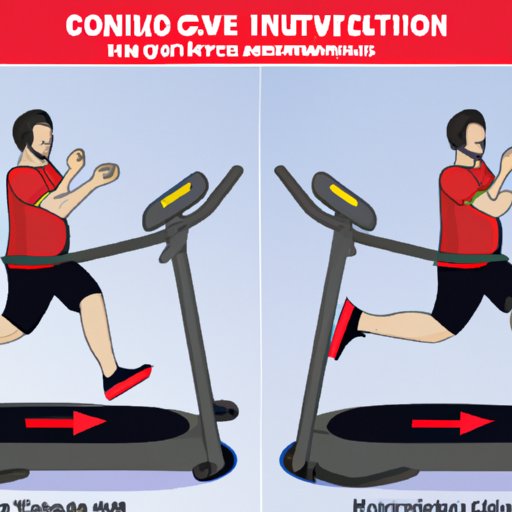Introduction
Cardiovascular exercise is an important component of any fitness plan. It has many physical and mental health benefits and can help you lose weight and improve your overall health. But what exactly is cardiovascular exercise? How does it work and what are its benefits? In this article, we’ll explore the definition, science, types, and tips for starting a cardiovascular exercise routine, as well as how it can help with weight loss and heart health.
The Science Behind Cardiovascular Exercise
Cardiovascular exercise is any type of physical activity that increases your heart rate. It can include activities such as walking, running, swimming, biking, or playing sports. The idea behind cardiovascular exercise is to get your heart rate up and keep it there for a sustained period of time. This helps to strengthen your heart, improve blood flow, and burn calories.
According to a study conducted by the American Council on Exercise, “regular cardiovascular exercise can reduce the risk of heart disease, stroke, obesity, and diabetes.” It also helps to reduce stress, increase energy levels, and improve overall mood. In addition, regular physical activity can help to strengthen bones and muscles, improve balance and coordination, and boost the immune system.
Types of Cardiovascular Exercise
When it comes to cardiovascular exercise, there are two main types: aerobic and anaerobic. Aerobic exercise is any activity that requires the use of large muscle groups and involves continuous movement. Examples of aerobic exercise include running, swimming, cycling, and dancing. This type of exercise is great for improving endurance, burning calories, and strengthening the heart and lungs.
Anaerobic exercise is any activity that requires short bursts of energy and does not involve continuous movement. Examples of anaerobic exercise include sprinting, weightlifting, and interval training. This type of exercise is great for building strength and power and can help to increase muscle mass.

Tips for Starting a Cardiovascular Exercise Routine
Starting a cardiovascular exercise routine can be intimidating, but it doesn’t have to be. Here are some tips to help you get started:
- Set Goals: Setting goals can help you stay motivated and focused on your workout routine. Start with small, achievable goals and gradually build up to more challenging ones.
- Find the Right Type of Exercise: Different types of exercise will give you different results. Find the type of exercise that works best for you and your goals.
- Track Your Progress: Tracking your progress can help you stay motivated and see how far you’ve come. You can track your progress with apps or by keeping a journal.

Cardiovascular Exercise for Weight Loss
Cardiovascular exercise can be an effective tool for weight loss. According to a study conducted by the National Institutes of Health (NIH), “people who engage in regular cardiovascular exercise can burn more calories than those who don’t.” This is because regular physical activity can help to increase your metabolism and burn more calories even when you’re not exercising.
In addition, cardiovascular exercise can help to reduce body fat percentage and improve body composition. This can lead to a healthier body weight and reduced risk of chronic diseases such as diabetes and heart disease.

Cardiovascular Exercise for Heart Health
Regular physical activity can also help to improve heart health. According to the NIH, “people who engage in regular cardiovascular exercise can reduce their blood pressure and cholesterol levels.” This can help to reduce the risk of heart disease and stroke.
In addition, regular physical activity can improve blood circulation and help to reduce inflammation. This can help to reduce the risk of heart attack and other cardiovascular conditions.
Combining Cardiovascular Exercise with Strength Training
In order to get the most out of your workout routine, it’s important to combine cardiovascular exercise with strength training. This will help to balance your muscular strength and endurance, while increasing overall fitness. It can also help to reduce the risk of injury and improve performance.
Examples of strength training exercises include weightlifting, resistance band exercises, and bodyweight exercises. Combining these exercises with aerobic exercise can help to maximize the benefits of both types of exercise.
Conclusion
Cardiovascular exercise is an important part of any fitness plan. It can help to improve heart health, reduce risk of chronic diseases, and increase energy levels. There are many different types of cardiovascular exercise, including aerobic and anaerobic activities. It’s important to find the type of exercise that works best for you and your goals. By combining cardiovascular exercise with strength training, you can maximize the benefits of both types of exercise and achieve your fitness goals.
(Note: Is this article not meeting your expectations? Do you have knowledge or insights to share? Unlock new opportunities and expand your reach by joining our authors team. Click Registration to join us and share your expertise with our readers.)
